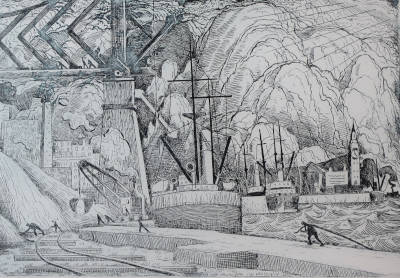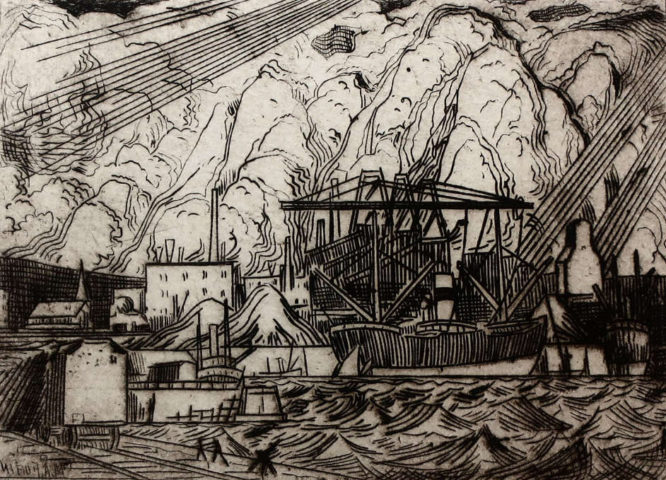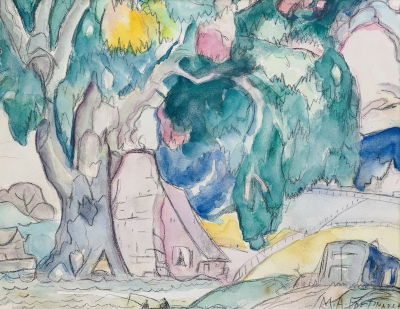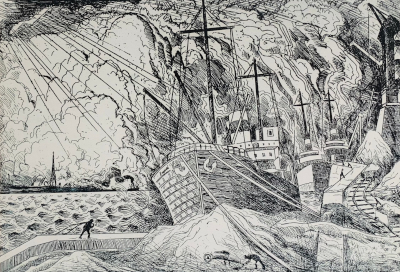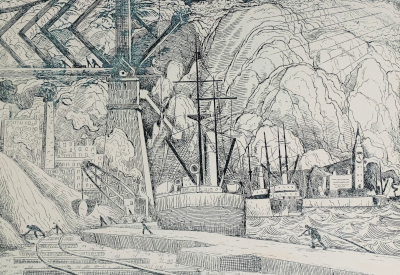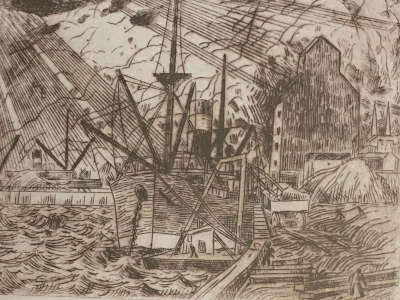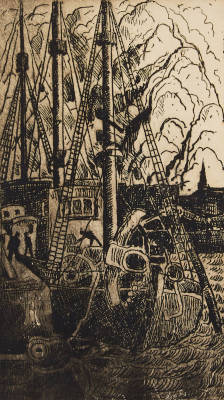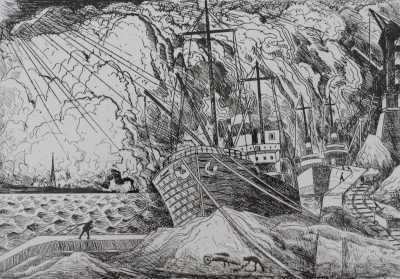oeuvres vendues
Marc-Aurèle Fortin, A.R.C.A.
Canadien, 1888 - 1970
Born: Canada: Québec, Sainte-Rose 1888-03-14
Died: Canada: Québec, Macamic 1970-03-02
Oeuvres
Biographie
« Tous les artistes subissent l´influence des autres pour la technique, le métier. Mais le véritable artiste conserve sa tour d´ivoire, qui est impénétrable. La tour d´ivoire, c´est le domaine de l´inspiration, c´est là que l´artiste va chercher ses idées sur l´art. »
(Marc-Aurèle Fortin, 1969)
The prolific Marc-Aurèle Fortin was a painter, watercolourist, printmaker and draughtsman whose highly decorative, colourful landscapes celebrate the picturesque in nature. Among his favourite subjects were huge, leafy elm trees, rustic houses, hay carts and Montreal’s port; his rare human subjects typically appeared dwarfed by nature. Fortin was technically inventive, experimenting with methods of watercolour, oil painting and mixed media.
Fortin studied in Montreal under Ludger Larose and Edmond Dyonnet, and under Edward J. Timmons at the Art Institute of Chicago. There, he discovered the works of Jean-François Millet, Claude Monet and Mary Cassat, as well as those of the British painters Frank Brangwyn and Sir Alfred East. Returning to Montreal in 1914, Fortin worked at odd jobs and painted in his spare time. It was after a short trip to England and France in 1920 that he began to work seriously as a painter and to show his work, which included scenes of the island of Montreal, largely rural at the time, and of his birthplace Sainte-Rose, north of the island. In the summers, he traveled to Quebec City, the Île d’Orléans and Charlevoix, drawing and painting houses and rural scenes. Between 1923 and 1926, he painted many of his celebrated tree scenes. In 1928, critic Jean Chauvin dedicated a chapter of Ateliers, his book on Canadian artists, to Fortin, comparing him to “a magician conjuring up, out of the earth, out of his palette, giant trees, extravagant skies, a whole enchanted nature…”
Fortin returned to France for a year between 1934 and 1935, traveling around the country, drawing and painting. Upon his return to Canada, he moved to Sainte-Rose and started experimenting with the application of pure colours onto a black surface, achieving luminous, brilliant colour. Later, he used a similar approach with a grey surface. Starting in the late 1930s, Fortin made painting trips to the Gaspé region, where he met Alexandre Bercovitch. Around this time, he experimented in watercolour highlighted with black pencil or pastel, and in the 1950s, painted in casein.
Beginning in 1955, Fortin suffered declining health and increasingly miserable living conditions. He lost both legs to diabetes and stopped painting for seven years, eventually resuming work from a wheelchair. In 1967, he moved to a sanatorium in Macamic, in the Abitibi region of Quebec. By the time he died at the age of 82, he had produced an estimated 8000 to 10 000 works, many of which were lost over the years to fire or unscrupulous dealers.
Fortin’s lush rendering of trees is evident in Landscape, Ahuntsic (c.1930). The engraving The Cart in the Village (c.1930) features his trademark hay cart. Landscape, Hochelaga (c.1931) is one of a series of paintings done from his Montreal apartment. It shows the complex composition and contrasting colours that are typical of his cityscapes.
Fortin participated in numerous international exhibitions and held solo exhibitions at the Musée du Québec (1944), in Almelo, Netherlands (1948), Montreal Museum of Fine Arts (1954), and at the National Gallery of Canada (1963). He won the Jessie Dow prize from the Art Association of Montreal (1938), a bronze medal at the New York World’s Fair (1939), and was an Associate of the Royal Canadian Academy.
Studied at
Under Ludger Larose and Edmond Dyonnet,
Art Institute of Chicago under Edward J. Timmons
Art Institute of Chicago under Edward J. Timmons
Collections
Expositions
Selected Solo exhibitions:
1944 Musée du Québec
1948 C.J.Van der A.A Gallery, Almelo, Holland
1948-57 Galerie l’Art Francais, Montreal
1944 Musée du Quebec, Quebec
1954 Montreal Museum of Fine Arts, Montreal
1963 National Gallery of Canada
1964 Fortin, The National Gallery of Canada
1968 Verdun Cultural Center, Quebec
1971 Fortin Retrospective, Maison des Arts, Chicoutimi, Quebec
1976 Fortin retrospective, Musée du Quebec
1944 Musée du Québec
1948 C.J.Van der A.A Gallery, Almelo, Holland
1948-57 Galerie l’Art Francais, Montreal
1944 Musée du Quebec, Quebec
1954 Montreal Museum of Fine Arts, Montreal
1963 National Gallery of Canada
1964 Fortin, The National Gallery of Canada
1968 Verdun Cultural Center, Quebec
1971 Fortin Retrospective, Maison des Arts, Chicoutimi, Quebec
1976 Fortin retrospective, Musée du Quebec
Awards
Jessie Dow prize from the Art Association of Montreal (1938),
Bronze medal at the New York World’s Fair (1939),
Bronze medal at the New York World’s Fair (1939),
Professional Activities
Associate of the Royal Canadian Academy
